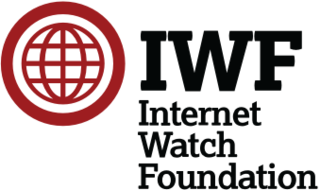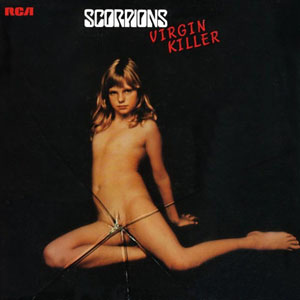Related Research Articles
Operation Avalanche was a major United States investigation of child pornography on the Internet launched in 1999 after the arrest and conviction of Thomas and Janice Reedy, who operated an Internet pornography business called Landslide Productions in Fort Worth, Texas. It was made public in early August 2001, at the end of Operation Avalanche, that 100 arrests were made out of 144 suspects. It was followed by Operation Ore in the United Kingdom, Operation Snowball in Canada, Operation Pecunia in Germany, Operation Amethyst in Ireland, and Operation Genesis in Switzerland.

The Protection of Children Act 1978 is an act of the Parliament of the United Kingdom that criminalized indecent photographs of children. The act applies in England and Wales. Similar provision for Scotland is contained in the Civic Government (Scotland) Act 1982 and for Northern Ireland in the Protection of Children Order 1978.
Operation Cathedral was a police operation that broke up a major international child pornography ring called The Wonderland Club operating over the Internet. It was led by the British National Crime Squad in cooperation with 1,500 officers from 13 other police forces around the world, who simultaneously arrested 104 suspects in 13 countries on 2 September 1998. The case received widespread international attention due to the highly organised nature of the ring, leading to public concerns of online child sexual abuse and legislative changes in the UK.
Thomas Victor O'Carroll is a British writer and pro-paedophile advocate. O'Carroll is a former chairman of the now disbanded Paedophile Information Exchange (PIE) and was at one time a prominent member of the International Paedophile and Child Emancipation.

Ian David Karslake Watkins is a Welsh former musician. He was the lead singer and frontman of the rock band Lostprophets, which he co-founded with Lee Gaze in 1997. His career ended after he was sentenced to 29 years' imprisonment in 2013 for multiple sex offences, including the sexual assault of young children and infants, a sentence later increased by ten months for having a mobile phone in prison. His bandmates disbanded Lostprophets shortly after his conviction and formed No Devotion with American singer Geoff Rickly.
Pedophilia is a psychiatric disorder in which an adult or older adolescent experiences a primary or exclusive sexual attraction to prepubescent children. Although girls typically begin the process of puberty at age 10 or 11, and boys at age 11 or 12, psychiatric diagnostic criteria for pedophilia extend the cut-off point for prepubescence to age 13. People with the disorder are often referred to as pedophiles.

The Paedophile Information Exchange (PIE) was a British pro-paedophile activist group, founded in October 1974 and officially disbanded in 1984. The group campaigned for the abolition of the age of consent. It was described by the BBC in 2007 as "an international organisation of people who trade obscene material".
Internet censorship in the United Kingdom is conducted under a variety of laws, judicial processes, administrative regulations and voluntary arrangements. It is achieved by blocking access to sites as well as the use of laws that criminalise publication or possession of certain types of material. These include English defamation law, the Copyright law of the United Kingdom, regulations against incitement to terrorism and child pornography.

Christopher Paul Neil, also known as Mr. Swirl, Swirl Face, or Vico, is a Canadian convicted child molester. He was the subject of a highly publicized Interpol investigation of the sexual abuse of at least 12 young boys in Vietnam, Cambodia, and Thailand, primarily owing to the Internet release of pornographic images depicting the abuse. He was arrested by Thai police in October 2007.
Laws against child sexual abuse vary by country based on the local definition of who a child is and what constitutes child sexual abuse. Most countries in the world employ some form of age of consent, with sexual contact with an underage person being criminally penalized. As the age of consent to sexual behaviour varies from country to country, so too do definitions of child sexual abuse. An adult's sexual intercourse with a minor below the legal age of consent may sometimes be referred to as statutory rape, based on the principle that any apparent consent by a minor could not be considered legal consent.

The Internet Watch Foundation (IWF) is a global registered charity based in Cambridge, England. It states that its remit is "to minimise the availability of online sexual abuse content, specifically child sexual abuse images and videos hosted anywhere in the world and non-photographic child sexual abuse images hosted in the UK." Content inciting racial hatred was removed from the IWF's remit after a police website was set up for the purpose in April 2011. The IWF used to also take reports of criminally obscene adult content hosted in the UK. This was removed from the IWF's remit in 2017. As part of its function, the IWF says that it will "supply partners with an accurate and current URL list to enable blocking of child sexual abuse content". It has "an excellent and responsive national Hotline reporting service" for receiving reports from the public. In addition to receiving referrals from the public, its agents also proactively search the open web and deep web to identify child sexual abuse images and videos. It can then ask service providers to take down the websites containing the images or to block them if they fall outside UK jurisdiction.

On 5 December 2008, the Internet Watch Foundation (IWF), a British watchdog group, blacklisted content on the English Wikipedia related to Scorpions' 1976 studio album Virgin Killer, due to the presence of its controversial cover artwork, depicting a young girl posing nude, with a faux shattered-glass effect obscuring her genitalia. The image was deemed to be "potentially illegal content" under English law which forbids the possession or creation of indecent photographs of children. The IWF's blacklist are used in web filtering systems such as Cleanfeed.
Legal frameworks around fictional pornography depicting minors vary depending on country and nature of the material involved. Laws against production, distribution and consumption of child pornography generally separate images into three categories: real, pseudo, and virtual. Pseudo-photographic child pornography is produced by digitally manipulating non-sexual images of real minors to make pornographic material. Virtual child pornography depicts purely fictional characters. "Fictional pornography depicting minors", as covered in this article, includes these latter two categories, whose legalities vary by jurisdiction, and often differ with each other and with the legality of real child pornography.
An obscenity is any utterance or act that strongly offends the prevalent morality of the time. It is derived from the Latin obscēnus, obscaenus, "boding ill; disgusting; indecent", of uncertain etymology. Generally, the term can be used to indicate strong moral repugnance and outrage in expressions such as "obscene profits" and "the obscenity of war". As a legal term, it usually refers to descriptions and depictions of people engaged in sexual and excretory activity.
Child pornography laws in England, Scotland, Wales and Northern Ireland are covered by the Protection of Children Act 1978, which made it illegal to take, make, distribute, show, or possess for the intent of showing or distributing an indecent photograph of someone under the age of 18. The maximum penalty is 10 years in prison. In the context of digital media, saving an indecent image to a computer's hard drive is considered to be "making" the image, as it causes a copy to exist which did not exist before. Indecency is to be interpreted by a jury, who should apply the recognised standards of propriety.

There are a number of sexual offences under the law of England and Wales, the law of Scotland, and the law of Northern Ireland.
Child pornography is erotic material that depicts persons under the age of 18. The precise characteristics of what constitutes child pornography varies by criminal jurisdiction.
The 2009 Plymouth child abuse case was a child abuse and paedophile ring involving at least five adults from different parts of England. The case centred on photographs taken of up to 64 children by Vanessa George, a nursery worker in Plymouth. It highlighted the issue of child molestation by women, as all but one of the members of the ring were female.
Maxwell "Max" Taylor is a criminal and legal psychologist. His early work specialised in the study of terrorism but he also became involved in the study of sex offenders, and in the development of capacity building activities for disadvantaged children in conflict zones, returning later to the study of terrorism.

Child sexual abuse in the United Kingdom has been reported in the country throughout its history. In about 90% of cases the abuser is a person known to the child. However, cases during the second half of the twentieth century, involving religious institutions, schools, popular entertainers, politicians, military personnel, and other officials, have been revealed and widely publicised since the beginning of the twenty-first century. Child sexual abuse rings in numerous towns and cities across the UK have also drawn considerable attention.
References
- ↑ "Family Law Reform Act 1969". /www.legislation.gov.uk. Retrieved July 6, 2023.
- ↑ "COPINE Project Homepage". November 29, 2007. Archived from the original on 2007-11-29. Retrieved June 13, 2023.
- ↑ Taylor, Max; Holland, G; Quayle, E. (2001). "Typology of Paedophile Picture Collections" (PDF). The Police Journal. 74 (2): 97–107. doi:10.1177/0032258X0107400202. S2CID 148756344. Archived from the original (PDF) on 2016-08-17. Retrieved 2012-09-10.
- ↑ Quayle, Ethel (September 2008). "The COPINE Project". Irish Probation Journal. 5. Probation Board for Northern Ireland. ISSN 1649-6396.
- ↑ Taylor, M.; Quayle, E.; Holland, G. (2001). "Child Pornography, the Internet and Offending". The Canadian Journal of Policy Research. 2. ISUMA: 94–100.
- ↑ "Archived copy". Archived from the original on 2015-12-15. Retrieved 2010-06-25.
{{cite web}}: CS1 maint: archived copy as title (link) case summary - 1 2 Vella, Paul, "Understanding Computer Evidence" (PDF), Evidence Matters, archived from the original (PDF) on 2011-09-02, retrieved 2011-02-21
- ↑ "Sentencing Council - Sexual Offences Definitive Guideline" (PDF). SentencingCouncil.org.uk. Sentencing Council. April 1, 2014. Retrieved November 23, 2022.
- ↑ "Assessment Levels". IWF. Internet Watch Foundation (IWF). Retrieved 2014-08-18.